KIA Niro: Brake Actuation Unit Repair procedures
Brake Actuation Unit Components and components location

Warning
IBAU(Intergrated Brake Actuation Unit) must not be disassembled.
- Integrated Brake Actuation Unit (IBAU) ECU
- Reservoir
- Pedal Simulator
- Integrated Brake Actuation Unit (IBAU)
Brake Actuation Unit Repair procedures
Removal
Warning
The following section describes how to diagnose faults using a diagnostic instrument.
1) Connect self-diagnosis connector (16pins) located under the driver side crash pad to self-diagnosis device, and then turn the self-diagnosis device after key is ON.
2) Select the "vehicle model" and "ESC/AHB" on KDS vehicle selection screen.
3) Select the "High Pressure Release Mode" on KDS screen, then select OK.
4) Proceed with the test according to the screen instructions.

- Turn ignition switch OFF and disconnect the negative (-) battery terminal.
- Disconnect the ECM & TCM bracket.
(Refer to Engine Control System - "Engine Control Module (ECM)")
- Remove the air cleaner assembly.
(Refer to Engine Mechanical System - "Air Cleaner")
- Remove the brake fluid from the master cylinder reservoir with a syringe.
Warning
Do not spill brake fluid on the vehicle as it may damage the paint. If brake fluid comes in contact with the paint, wash off immediately with water.
- Remove the nuts (A), hose (B), brake fluid level sensor connector (C).
Tightening torque: 6.8 - 10.7 N*m (0.7 - 1.1 kgf*m, 5.0 - 7.9 lb*ft)
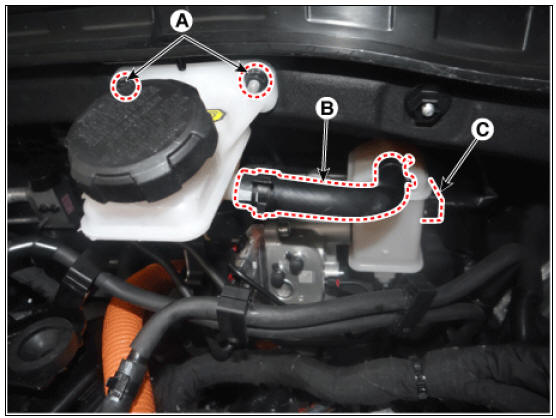
- Disconnect the integrated brake actuation unit (IBAU) connector (A) and brake tube (B).
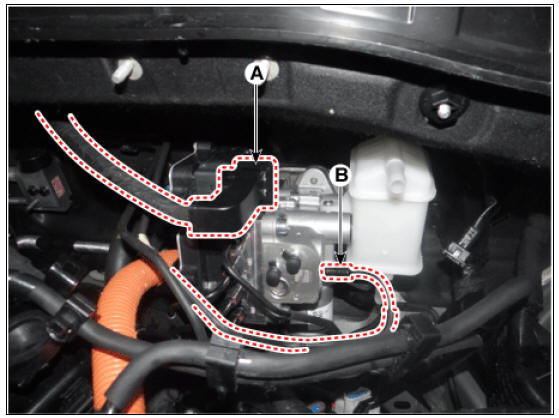
- Loosen the flare nuts (A) from the integrated brake actuation unit (IBAU) and then remove the brake tube.
Tightening torque: 12.7 - 16.7 N*m (1.3 - 1.7 kgf*m, 9.4 - 12.3 lb*ft)
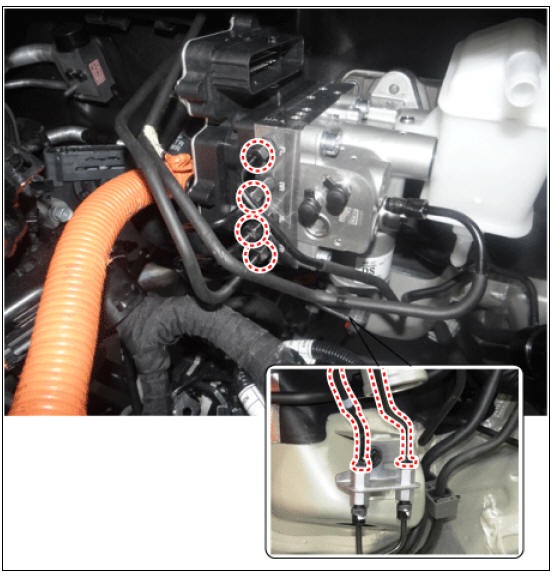
- Remove the snap pin (A) and clebis pin (B).
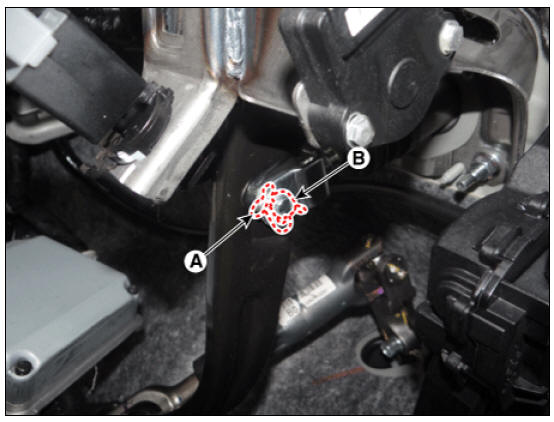
- Loosen the brake pedal nuts.
Tightening torque : 16.7 - 25.5 N*m (1.7 - 2.6 kgf*m, 12.3 - 18.8 lb*ft)

Installation
- Installation is the reverse of removal.
- Check the brake pedal operation.
- After filling the brake fluid in the reservoir, perform the air bleed.
(Refer to the Brake system - "Brake Bleeding Procedure")
- Conduct the variant coding.
- Conduct the pedal traval sensor (PTS) calibration.
- Conduct the longitidinal G sensor clibration. (HAC/DBC Only)
- Conduct the pressure sensor calibration.
- Conduct the auto detected configuration reset the if necessary.
Diagnosis by using diagnostic device
The following section describes how to diagnose faults using a diagnostic instrument.
- Connect self-diagnosis connector (16pins) located under the driver side crash pad to self-diagnosis device, and then turn the selfdiagnosis device after key is ON.
- Select the "vehicle model" and "ESC/AHB" on KDS vehicle selection screen.
- Proceed with the test according to the screen instructions.
Longitudinal G Sensor Calibration(HAC/DBC Only)

Pressure Sensor Calibration

Pedal Travel Sensor (PTS) Calibration

Auto Detected Configuration Reset(ESP(ESC) Only)

ESC Variant Coding
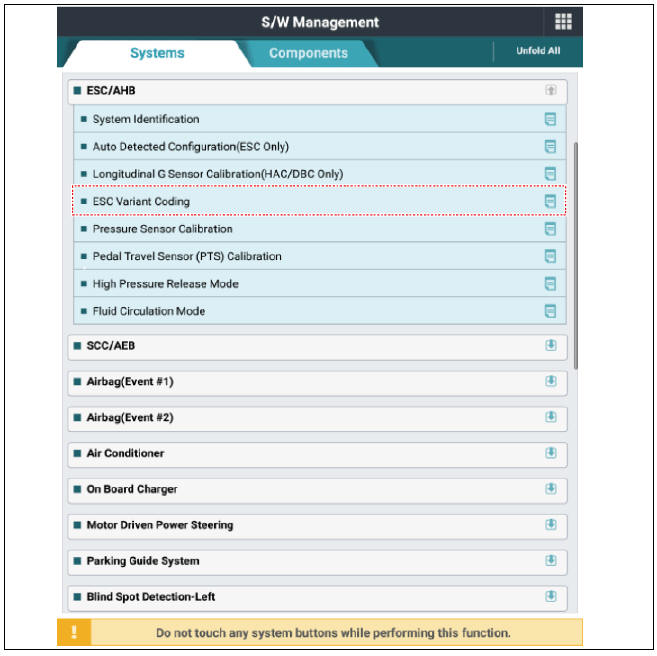
READ NEXT:
 Pressure Source Unit Repair procedures
Pressure Source Unit Repair procedures
Pressure Source Unit Components and components location
Warning
PSU (Presser Source Unit) must not be disassembled.
Pressure Source Unit (PSU)
Pressure Source Unit (PSU) connector
Motor
Filler adapter
Bracket
Accumulator
Remova
 Brake Line
Brake Line
Brake Line Components and components location
Removal
Disconnect the brake fluid level switch connector, and remove the
reservoir cap.
Remove the brake fluid from the master cylinder reservoir with a
syringe.
Warning
Do not spill
 Brake Pedal
Brake Pedal
Brake pedal member assembly
Stop lamp switch
Brake pedal arm
Brake pedal pad
Brake pedal stroke sensor
Removal
Turn ignition switch OFF and disconnect the negative (-) battery
terminal.
Remove the crash pad lower panel.
(
SEE MORE:
 If the engine overheats (Kia NIRO Hybrid)
If the engine overheats (Kia NIRO Hybrid)
INFORMATION
When the temperature gauge indicates
overheating, loss of power or a loud
pinging, knocking noise will occur, being
the engine too hot.
Cooling down the vehicle
Operation
Stop the vehicle to a safe place.
Turn the hazard warni
 Piston and Connecting Rod Repair procedures
Piston and Connecting Rod Repair procedures
Disassembly
Warning
Be sure to read and follow the "General Safety Information and
Caution" before doing any work related
with the high voltage system. Failure to follow the safety instructions may
result in serious electrical
injuries
Categories
- Home
- KIA Niro EV, Hybrid - Second generation - (SG2) (2021-2024) - Owner's manual
- Kia Niro - First generation - (DE) (2017-2022) - Service and Repair Manual
- Contact Us
